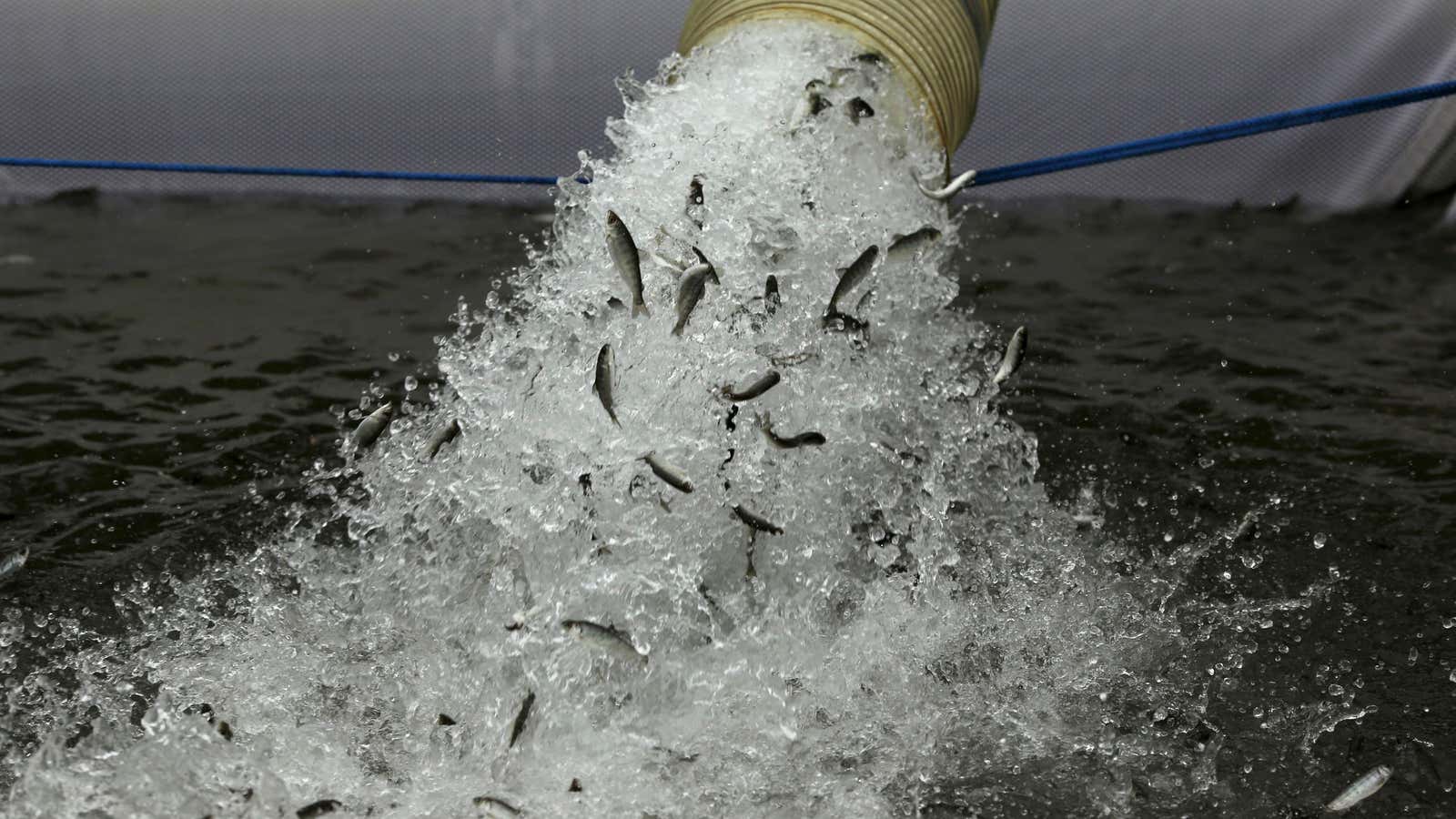“Marijuana is literally sucking rivers dry,” California state senator Mike McGuire told his colleagues this week.
There are more than 50,000 marijuana growing sites throughout the state, many of them in Northern California’s Emerald Triangle. Selling pot for medicinal purposes has been legal since 1996, but many California growers are cultivating the plant illegally, and in far greater quantities than the medical marijuana industry demands, according to the Wall Street Journal. And it turns out that the unregulated farms are a significant drain on the state’s water resources.
Pot farmers’ water use may not be a major cause of California’s water drought—but it is taking a heavy toll on the endangered coho salmon, which use the same water that the farmers are siphoning off for their plants. Cannabis growers irrigate their farms by siphoning water from local rivers, often “at headwater springs and streams,” according to a 2014 report (PDF, p. 118) from the US National Marine Fisheries Service, “thereby removing the coldest, cleanest water at the most stressful time of the year for coho salmon.”
As a July 4 op-ed in the Sacramento Bee put it: “Trickle by trickle, spring by tiny spring, the cold, clear water these fish need to survive is going to weed.”
California has increasingly had to resort to trucking chinook salmon to their spawning grounds, because the rivers aren’t full enough or cold enough for them to make it upstream on their own. In June, the state sent out workers to the Russian River with nets and buckets to rescue coho salmon from dangerously low rivers, reportedly drained by nearby wineries in Sonoma County. At least government officials can order vineyards to reduce their water use—controlling the pot growers is much more difficult, because so many of their operations are clandestine.
